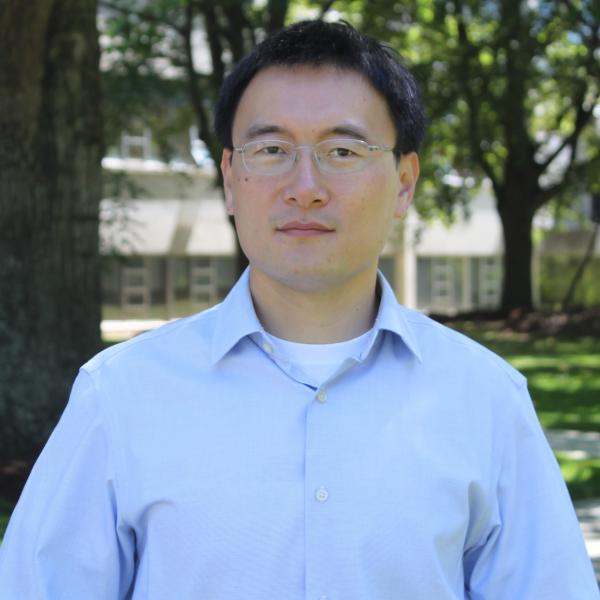Hongshen Ma
Associate Professor
Mechanical Engineering, School of Biomedical Engineering
Associate member, Department of Urologic Sciences
Senior Research Scientist, Vancouver Prostate Centre, Vancouver General Hospital
Associate member, Department of Pathology and Laboratory Medicine
Dr. Hongshen Ma is an associate professor in the Department of Mechanical Engineering and School of Biomedical Engineering at the University of British Columbia (UBC). He obtained his bachelor’s degree in Engineering Physics from UBC, master’s from the Media Laboratory at the Massachusetts Institute of Technology (MIT), and PhD from Electrical Engineering at MIT. Dr. Ma’s research program aims to develop new technologies to interrogate and manipulate biological systems at the cellular scale with a specific focus on cytometry and cell separation. His work include the development of microfluidic devices to analyze cell deformability and to separate cells based on deformability.
These devices are being used to analyze the loss of red blood cell deformability as a biomarker in transfusion medicine and falciparum malaria, as well as the separation of circulating tumor cells from prostate cancer patients. Dr. Ma’s research also includes the development of machine learning algorithms for image cytometry, as well as technologies for image-based cell separation and single cell sequencing.
Research Focus
The overarching goal of our research is the development of new technologies for medical research and treatment. Our work is enabled by advances in fabrication, measurement, and computation across a wide range of domains and length scales. Our core capabilities include microfabrication, microfluidics, instrumentation and automation, data analytics, and product development. Current research areas include 1) the development of new technologies for cell sorting, cell biomechanics, single cell sequencing, and cell migration and chemotaxis; as well as 2) the application of these technologies to study circulating tumor cells, personalize cancer therapies, assess blood quality, and expedite antimalarial drug development.
Current Research
Deformability based cell sorting:The mechanical deformability of individual cells could often be used to distinguish different cell types from each other or diseased cells from healthy cells. Simple filtration methods have not been able to reliably sort or separate cells based deformability because of the inability to precisely control the filtration force applied to each cell. We are developing new deformability based cell sorting mechanisms, such as the microfluidic ratchet and the resettable cell trap, that ensure consistent forces are applied to each cell by actively preventing cell clogging and adhesion in the filter microstructure.
Circulating tumor cell separation and analysis:Circulating tumor cells are malignant cells released from a primary tumor into the bloodstream where they have the potential to form metastases that are ultimately responsible for >90% of all cancer-related deaths. The number and molecular status of these cells are thought to be of significant utility in the diagnosis, treatment, and study of cancer because these tumor cells can be rapidly obtained from a simple blood test without the need for invasive biopsies, and represent a key subpopulation of tumor cells that are relevant to metastasis. Applying mechanisms we developed for biophysical cell separation and biochemical cell separation, our group is able to capture these cells from whole blood at high purity. Working with clinical collaborators at the Vancouver Prostate Centre, we are performing molecular analysis of these cells and correlating their status with clinical outcomes.
Red blood cell deformability as a biological assay:Red blood cells (RBCs) perform the critical function of transporting oxygen and carbon dioxide between tissues in the body. This capability is enable in part by their extraordinary mechanical deformability where they must repeatedly squeeze through capillaries many times smaller than their diameter. The loss of RBC deformability is associated with many diseases, including malaria, sickle cell disease, thalassemia, and nutritional deficiencies. We have developed multiple microfluidic devices for measuring the deformability of RBC in a physiologically relevant manner with high sensitivity and throughput. Our focus now is to apply these technologies as a biological assay for challenges in malaria and transfusion medicine. In particular, we recently showed that all clinical antimalarials reduces deformability of RBCs infected with Plasmodium falciparum (the parasite that causes malaria), which potentially enabling this property to be used as an functional screen for antimalarial drugs, as well as a method to evaluate antimalarial drug efficacy. Additionally, we are using this method to investigate the degradation of RBC deformability during cold storage and how this approach could be used to reduce complications.
Fabrication and instrumentation technologies for microfluidics:Advances in microfluidics are fundamentally enabled by advances in fabrication and instrumentation. We are continuously developing new microfabrication methods and electronic instrumentation technologies (including both hardware and software) to provide sensitive control and readout for microfluidics systems.
Research Keywords
Microfluidics, Image Cytometry, Cell sorting, Single cell sequencing, Transfusion medicine, Circulating tumor cells
